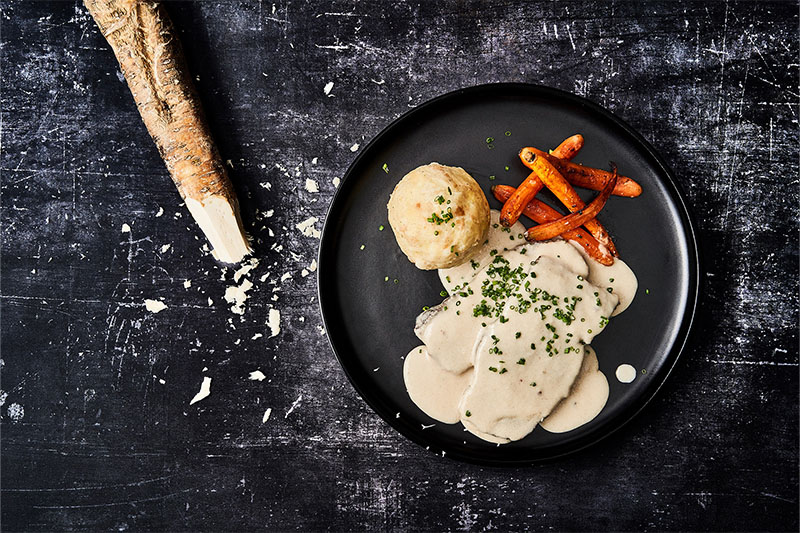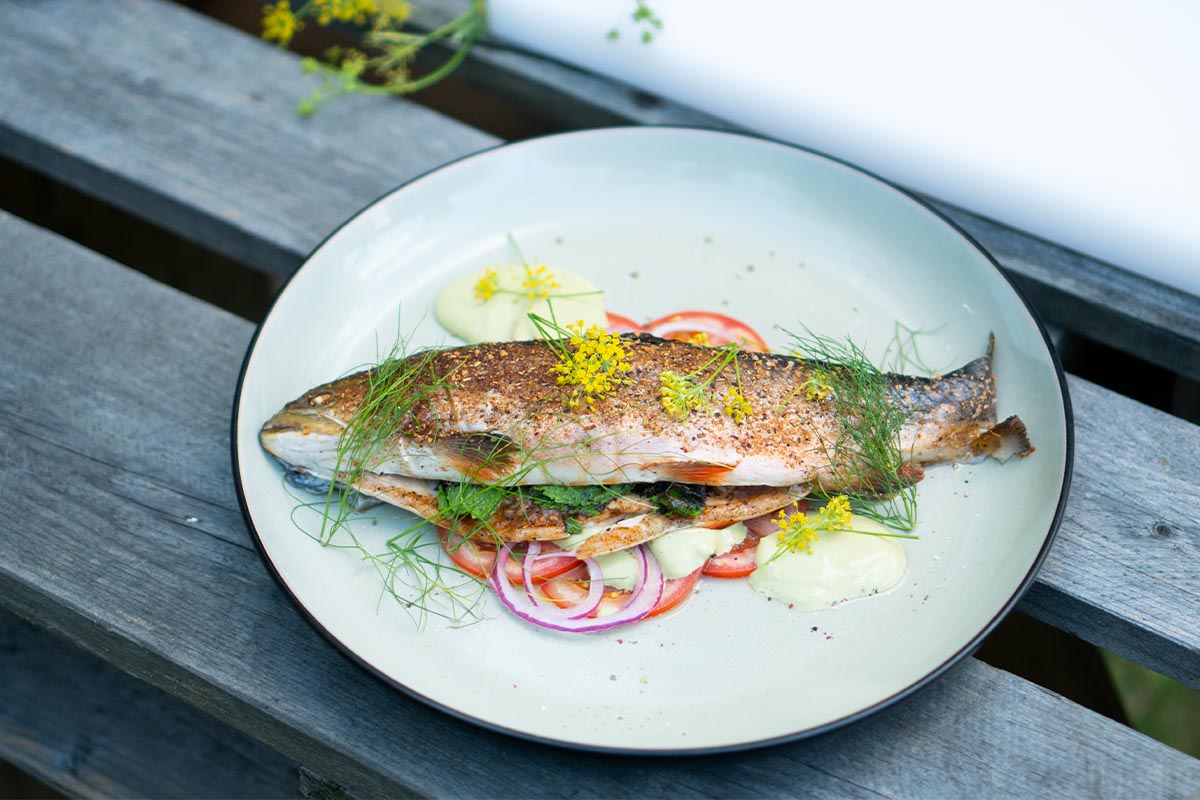Lucki Maurer’s special heroes’ menu
A menu for true heroes? “No problem,” says Lucki Maurer. “I would serve a tartare and follow it up – in true Bavarian style – with ox and horseradish, and plank salmon to finish.” It sounds sensational – and it soon becomes clear that it tastes every bit as good.
Lucki Maurer is what Bavarians call a Wirtshausbua – a man intimately familiar with the virtues of traditional taverns. He comes from a family with deep culinary roots in the Bavarian Forest. A chef, a cattle breeder, an author and a regional pioneer, Maurer is known in gourmet circles as the ‘Meat Pope’, both in Germany and beyond. More than anything else, however, he’s an exceptionally personable, down-to-earth guy.
He impressed Hamburg’s premier food-snob Tim Mälzer on his own cooking show and now has his name on the cover of a total of six multi-award-winning cook books. Whether it’s a perfect steak, BBQ, forest fruits or fine dining, only high-quality produce sourced as locally as possible makes it through the doors of STOI, Maurer’s training and events kitchen in Rattenberg, a small town in the Bavarian Forest.

But what about the name: STOI? That was the brainchild of his wife, Steffi, when they were renovating the over 300-year-old farmhouse back in 2014. Although, as he says, he had long since given up on his dream of owning his own restaurant, they managed to turn the old cattle stall into a cooking school, restaurant and Wagyu workshop.
‘MeatingPoint’ was Lucki’s original idea for the name, reflecting his plans for a venue where meat connoisseurs would come together. STOI, however, won hands-down – though it might take some explaining to those hailing from outside Bavaria. As Maurer enjoys telling his guests, “Stoi, the Bavarian word for a cattle stall, almost sounds Japanese. It could be an international fine dining restaurant in Sydney, Tokyo or San Francisco!” Today, he invites some of the country’s foremost chefs to this very cattle stall. Roland Trettl, Harald Wohlfahrt, Thomas Bühner, Tim Mälzer and many more have cooked here. It is also a venue for Lucki’s cooking courses, from a dry-aging seminar to BBQ and steak workshops and, of course, a specialist sausage-making course.

STOI has earned prestigious awards for this work, from Best Gastronomy Concept to Germany’s Number 1 Culinary Hotspot. Maurer, meanwhile, has been scaling the culinary Mount Olympus, having been named Top Newcomer and taking 27th place in the 100 Best Chefs in Germany.
At STOI, Lucki Maurer serves up a menu fit for legendary heroes: tartare, ox and horseradish, and plank salmon to finish. Let’s begin with the tartare, which Maurer calls “the perfect way to start”. This recipe serves four:

- 350g raw minced beef (Black Angus)
- 3 tbsp mustard
- 4 tbsp mayonnaise
- 5 tbsp ketchup
- 1 tbsp capers
- 4 egg yolks
- Sugar
- Salt
- Black pepper
- Chicory
- Chervil
- 2 Shallots
- Chervil sprigs to garnish
The second course, ox and horseradish, is a dish Lucki created in homage to the Hotel Waldschlößl and his father’s cooking. It is a recipe from his childhood that he has now immortalized in his book Fleisch-Codex (Meat Codex), in a chapter entitled ‘Classics’. It consists of a silverside rump cut with boiled potatoes, kohlrabi and freshly grated horseradish. As it happens, ox and horseradish is one of the recipes Lucki and his team have turned into a delicious preserve, available in jars from the STOI shop.

- 800g raw silverside of ox
- 200g root vegetables (carrots, leeks, celery, onions)
- 4 bay leaves
- 500g cream
- 50g horseradish sauce
- Starch or kneaded butter
- Sugar
- Salt
- White Pepper
- 300g kohlrabi
- 20g butter
- Sugar
- Salt
- 600g potatoes (ideally a floury variety)
- 50g fresh horseradish
Last but by no means least is the crowning glory: the third course. “One of our classic BBQ dishes, especially ideal in summer,” says Lucki. Plank salmon with caipirinha – but instead of drinking a cocktail with our fish, the ingredients for the caipirinha are packed into the marinade! It might sound crazy, but it tastes so good you’ll be begging for more!

By the way, salmon is a firm fixture in Maurer’s BBQ workshops, with fish also making an appearance on every menu the Meat Pope serves up at STOI. And, when it comes to fish, Lucki says he still wants to know where the animal comes from, how it lived its life, how it was caught, and how it has been processed. Over the years, he has developed his own style of cooking following the nose-to-tail principle, incorporating lots of Japanese influences and sometimes relying on the maxim ‘less is more’. A constant component, however, is the complete respect he shows his produce, from meat to fish and all the other ingredients.










